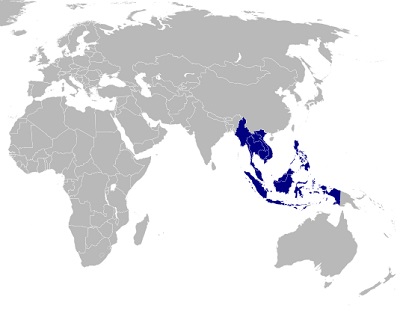More consumers are opting to shop via mobile devices
Mobile commerce is beginning to see aggressive growth in Southeast Asia. The Asia Pacific region has become one of the most attractive and fastest growing mobile payments markets in the world, with companies from all over the world flocking to the region to take advantage of this fact. A new report from Criteo shows that Southeast Asia, in particular, is seeing significant growth in terms of mobile shopping and the availability of mobile payment services. This is partly due to consumers becoming more comfortable with the basic concept of mobile commerce.
Report shows that mobile shopping is growing in many Southeast Asian countries
The report from Criteo shows that mobile payments account for approximately 40% of all transactions made among digital retailers. In the fourth quarter of 2015, mobile transactions accounted for 25% of all payments being made in the digital space, with countries like India, Singapore, and Thailand experiencing the strongest growth in mobile payments. Among mobile shoppers, smartphones where the favored purchasing platform.
Smartphones have become the favored shopping platform among consumers
 Smartphone purchases accounted for approximately 73% of all mobile commerce sales in Southeast Asia. Tablets accounted for only 27% of these transactions. Consumers had favored tablet devices in the past because of the larger screens that these devices feature. The shopping experience was also relatively more enjoyable than what consumers experienced with smartphones, as retailers had developed services that performed better on tablets. Now, however, consumers are favoring smartphones because of their small size and how much more convenient they are when compared to tablet devices.
Smartphone purchases accounted for approximately 73% of all mobile commerce sales in Southeast Asia. Tablets accounted for only 27% of these transactions. Consumers had favored tablet devices in the past because of the larger screens that these devices feature. The shopping experience was also relatively more enjoyable than what consumers experienced with smartphones, as retailers had developed services that performed better on tablets. Now, however, consumers are favoring smartphones because of their small size and how much more convenient they are when compared to tablet devices.
Security remains one of the greatest concerns that mobile shoppers have
While mobile commerce is growing quickly in Southeast Asia, many consumers remain concerned about the security of their financial information when making mobile purchases. As mobile shopping becomes more popular, hackers are beginning to target this sector in order to gain access to consumer financial information. Retailers and companies responsible for mobile payment services have been addressing security issues in order to secure the continued growth of the mobile commerce space.

 According to RetailMeNot CMO, Marissa Tarleton, “We’ve seen increased interest from our retail partners working to better understand how mobile marketing channels like RetailMeNot can help them drive brand awareness, traffic online and in-store, and ultimately sales.”
According to RetailMeNot CMO, Marissa Tarleton, “We’ve seen increased interest from our retail partners working to better understand how mobile marketing channels like RetailMeNot can help them drive brand awareness, traffic online and in-store, and ultimately sales.”